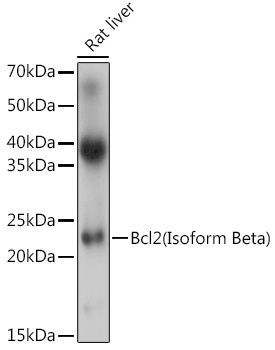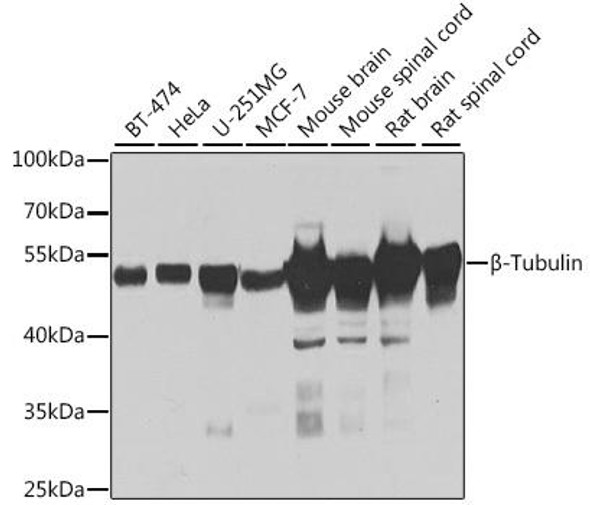Protein type:Oncoprotein; Autophagy; Apoptosis; Membrane protein, integral Cellular Component: cytoplasm; cytosol; endoplasmic reticulum; endoplasmic reticulum membrane; integral to membrane; intracellular; membrane; mitochondrial membrane; mitochondrial outer membrane; mitochondrion; myelin sheath; nuclear membrane; nucleus; perinuclear region of cytoplasm; pore complex Molecular Function:BH domain binding; BH3 domain binding; channel activity; channel inhibitor activity; identical protein binding; protease binding; protein binding; protein heterodimerization activity; protein homodimerization activity; protein phosphatase 2A binding; protein phosphatase binding; transcription factor binding; ubiquitin protein ligase binding Biological Process: actin filament organization; apoptosis; apoptotic mitochondrial changes; axon regeneration; axonogenesis; B cell differentiation; B cell homeostasis; B cell lineage commitment; B cell proliferation; B cell receptor signaling pathway; behavioral fear response; CD8-positive, alpha-beta T cell lineage commitment; cell aging; cell growth; cell morphogenesis; cell proliferation; cell-cell adhesion; cellular calcium ion homeostasis; cellular response to glucose starvation; cochlear nucleus development; defense response to virus; developmental growth; digestive tract morphogenesis; DNA damage response, signal transduction resulting in induction of apoptosis; ear development; endoplasmic reticulum calcium ion homeostasis; focal adhesion formation; gland morphogenesis; glomerulus development; growth; hair follicle morphogenesis; hemopoiesis; homeostasis of number of cells within a tissue; immune system development; induction of apoptosis by oxidative stress; induction of apoptosis via death domain receptors; kidney development; leukocyte homeostasis; lymphocyte homeostasis; lymphoid progenitor cell differentiation; male gonad development; melanin metabolic process; melanocyte differentiation; mesenchymal cell development; metanephros development; negative regulation of apoptosis; negative regulation of autophagy; negative regulation of cell growth; negative regulation of cell migration; negative regulation of cell proliferation; negative regulation of cellular pH reduction; negative regulation of mitotic cell cycle; negative regulation of myeloid cell apoptosis; negative regulation of neuron apoptosis; negative regulation of ossification; negative regulation of osteoblast proliferation; negative regulation of retinal cell programmed cell death; neuron apoptosis; oocyte development; organ growth; organ morphogenesis; ossification; ovarian follicle development; peptidyl-serine phosphorylation; peptidyl-threonine phosphorylation; pigment granule organization and biogenesis; pigmentation; pigmentation during development; positive regulation of B cell proliferation; positive regulation of catalytic activity; positive regulation of cell growth; positive regulation of cell proliferation; positive regulation of melanocyte differentiation; positive regulation of multicellular organism growth; positive regulation of neuron maturation; positive regulation of peptidyl-serine phosphorylation; positive regulation of pigmentation; positive regulation of skeletal muscle fiber development; positive regulation of smooth muscle cell migration; post-embryonic development; protein amino acid dephosphorylation; protein polyubiquitination; regulation of apoptosis; regulation of autophagy; regulation of calcium ion transport; regulation of catalytic activity; regulation of cell cycle; regulation of cell-matrix adhesion; regulation of gene expression; regulation of mitochondrial membrane permeability; regulation of mitochondrial membrane potential; regulation of nitrogen utilization; regulation of pigmentation during development; regulation of programmed cell death; regulation of protein heterodimerization activity; regulation of protein homodimerization activity; regulation of protein localization; regulation of protein stability; regulation of transmembrane transporter activity; regulation of viral genome replication; release of cytochrome c from mitochondria; renal system process; response to acid; response to cytokine stimulus; response to DNA damage stimulus; response to drug; response to gamma radiation; response to glucocorticoid stimulus; response to hydrogen peroxide; response to iron ion; response to nicotine; response to oxidative stress; response to steroid hormone stimulus; response to toxin; response to UV-B; spleen development; T cell differentiation; T cell differentiation in the thymus; T cell homeostasis; T cell lineage commitment; thymus development; transmembrane transport; ureteric bud branching; ureteric bud development | 






